Books by Barbara Helwing
The National Museum of Iran translated the exhibition catalogue of the Bonn Exhibition - availabl... more The National Museum of Iran translated the exhibition catalogue of the Bonn Exhibition - available from Iran National Museum, Tehran
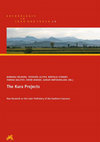
Reports on the excavations and specialist studies carried out within the Kura Projects in Azerba... more Reports on the excavations and specialist studies carried out within the Kura Projects in Azerbaijan and Georgia, 2010 to 2016. The articles included in this volume refer to two research projects, the general idea of which was to give the cultural and landscape history during Holocene period a solid foundation with help from new excavations and surveys. Through detailed studies, the authors thematize aspects like environmental reconstruction, economic activities and symbolic acts, while the excavation results offer a look into hitherto unknown phenomena of the Neolithic and Chalcolithic of the Southern Caucasus. They demonstrate that the expansion of the agrarian lifestyle in the Southern Caucasus occurred in forms other than those of the Neolithic Expansion of Anatolian and southeastern Europe
With contributions by J. Abuladze, G. Ahadi, T. Aliyev, L. Astruc, K. Bastert-Lamprichs, E. Baudouin, F. Becker, N. Benecke, L. Bouqet, G. Bruley-Chabot, M. B. D’Anna, A. Decaix, E. Degorre, J. Fassbinder, M. Fontugne, I. Gatsov, D. Guilbeau, F. Guliyev, S. Hansen, I. Heit, B. Helwing, X. Husson, V. Ioseliani, E. Jovenet, S. Kroll, B. Kromer, G. Le Dosseur, B. Lyonnet, G. Mirtskhulava, P. Nedelcheva, R. Neef, D. Neumann, L. Pecqueur, M. Poulmarc’h, P. Raymond, A. Ricci, A. Samzun, D. Steiniger, B. Taha, M. Tengberg, M. Ullrich, J. Wahl, D. Zhvania

Vom ewigen Schnee auf den Gipfeln von Alborz-und Zagrosgebirge bis in die Gluthitze der Wüste Lut... more Vom ewigen Schnee auf den Gipfeln von Alborz-und Zagrosgebirge bis in die Gluthitze der Wüste Lut: Der Iran ist ein Land der Kontraste mit tiefen historischen Wurzeln. In den fruchtbaren Tälern und Oasen Irans entstanden seit der Sesshaftwerdung von Menschen Dörfer, Städte, in denen Handwerk und Handel blühten, schließlich Staaten, deren Namen aus dem Kontakt mit Babylonien und später mit den Griechen überliefert sind und deren Entwicklung im Aufstieg des achämenidischen Weltreichs gipfelte. Spektakuläre Schätze aus einem über Jahrzehnte verschlossenen Land offenbaren die wenig bekannte Bildwelt der iranischen Kulturen vom 7. vorchristlichen Jahrtausend bis zum ersten persischen Großreich im 6. Jahrhundert v. Chr.: von den Tierkampfszenen auf Steingefäßen aus den Gräberfeldern von Dschiroft zur phantasievollen Malerei auf den Keramikgefäßen aus Susa, Kampfszenen auf dem Goldbecher von Hasanlu oder den Kostbarkeiten aus den erst 2007 entdeckten Gräbern zweier elamischer Prinzessinnen bei Dschubadschi. In Kooperation mit dem National Museum of Iran, Teheran, und der Iranian Cultural Heritage, Handicrafts and Tourism Organization
The book documents an exhibition held 2011 at the Museum of Islamic Art in Berlin to celebrate th... more The book documents an exhibition held 2011 at the Museum of Islamic Art in Berlin to celebrate the 50th anniversary of the German Archaeological Institute's opening in Tehran, Iran. Here is finally the Persian translation of the book.
(2011) Tehran 50. Ein halbes Jahrhundert deutsche Archäologen in Iran, eds. B. Helwing & P. Rahemipour
Archäologie in Iran und Turan, 2011
Begleitbuch zu einer Ausstellung des Deutschen Archäologischen Instituts in Zusammenarbeit mit de... more Begleitbuch zu einer Ausstellung des Deutschen Archäologischen Instituts in Zusammenarbeit mit dem Museum für Islamische Kunst, Staatliche Museen Berlin. 2.12.2011-4.3.2012 im Pergamonmuseum, Museumsinsel Berlin aus Anlass des fünfzigjährigen Bestehens der Außenstelle Teheran des Deutschen Archäologischen Instituts
The DAI Tehran Office turned 50 in 2011 - we celebrated in Berlin, with an exhibition and a conference. The book discusses the beginnings of German archaeological research in Iran since the 19th century until today; contains furthermore short texts on a variety of archaeology- and history-related issues, and some beautiful photographs from the DAI Archives.
Archäologie in Iran und Turan, 2011
(2002) Hassek Höyük II. Die spätchalkolithische Keramik
Istanbuler Forschungen 45, 2002
Papers by Barbara Helwing
Revisiting the Hilly Flanks of Iran
Routledge eBooks, Oct 24, 2023
The Neolithic in the South Caucasian Mil Steppe: A Diverse Mosaic / Güney Kafkasya Mil Bozkırlarında Neolitik Çağ: Renkli Bir Mozaik
This article provides a synthetic overview on recent research into the Neolithic settlement histo... more This article provides a synthetic overview on recent research into the Neolithic settlement history in the Mil Steppe of southern Azerbaijan. Short-lived and closely spaced, these settlement sites represent short-term and shifting occupations during a narrow time range, from 5800 to 5300 BCE. A highly diverse material culture attests to variable cultural affiliations of the populations, indicating some influx of ceramic craft traditions from regions to the south, in particular the Iranian highlands. In comparison with neighboring regions, the place of the Mil Steppe Neolithic within the wider context of Neolithic South Caucasia is evaluated as a distinctive regional variety.
The Neolithic and Chalcolithic of West Asia
Elsevier eBooks, 2023
The Iranian Plateau
Wiley-Blackwell eBooks, Apr 26, 2012
Foreword from the Director of the Vorderasiatisches Museum
Penn State University Press eBooks, Nov 1, 2020

What's the news? Thinking about McAnany and Hodder's ‘Thinking about stratigraphic sequence in social terms’
Archaeological Dialogues, Jun 1, 2009
New thoughts about the use of archaeological stratigraphies! Is this so? The discussion article b... more New thoughts about the use of archaeological stratigraphies! Is this so? The discussion article by Patricia A. McAnany and Ian Hodder aims at the construction of a theoretical framework to expound and discuss the problems of archaeological stratigraphy. Such a theoretical framework is urgently needed, they feel, and has been largely neglected until now. Reading and interpreting an archaeological stratigraphic record, if carried out according to the guidelines they try to establish, may reveal much more information about past social processes that led to the formation of the specific stratigraphy. In the authors' own words, ‘thinking about stratigraphic sequence in social terms is more than an academic exercise’ (quoted from abstract). As the record left behind by ancient communities, archaeological stratigraphies, in their view, take a middle place on a scale from micro-records endowed with meaning (artefacts) to macro-records of contextual meaning preserved in archaeological landscapes. The in-between, the immediate residues of meaningful past human behaviour encapsulated in archaeological sites, remain, in their view, undertheorized.
TÜBA - AR, Jun 15, 2005
İran 'da İlk Bileşik Toplumların gelişimi ik-iigiii aı-aşiumalaıila. başından itibaren daha çok k... more İran 'da İlk Bileşik Toplumların gelişimi ik-iigiii aı-aşiumalaıila. başından itibaren daha çok kuramsal göriişler IK-nimscnmiş ve Güneydoğu Türkiye ve Kuzey Suriye'den ekle edilen ÖÖlÜfir verilerle kaışılaştıımakııkabul gönnüşlüı: Oysa. İran 'daki arazi çalışmalarının noksanlığından kaynaklanan l>tı görüşlef son yirmi sene içersinde önemini yiiinniştir. Bu yazı. Orta iran 'daki Kalkolitik yerleşmelerle, aynı zamanda yeni arazi çalışmalarına ait verileri ve hu araşiıımalann günıel dununu hakkındaki hir gene! görüşü sunmaktadır. Bu yazıyla eldeki veri lerle geçedi kuramsal yaklaşanlar tartışılarak. Izınzer toplumların kaışılaşiınlmalaıı hakkında fikir oluşturmak, buradan da. özellikle güneydoğu Türkiye ve kuzey Suriye'deki benzer gelişimlerle İran verilerinin karşılaş!inin msı a maçiann lakladır.
A Comparative View on Metallurgical Innovations in South-Western Asia
Oxbow Books, Sep 27, 2017

Ancient Lanka
In the 1st millennium BCE Sri Lanka was central to the wide-spanning trading networks in the West... more In the 1st millennium BCE Sri Lanka was central to the wide-spanning trading networks in the Western Indian Ocean region. Population agglomerations grew on the coast and further inland, where Anuradhapura emerged as the major central place. Parallel agglomerations formed in the south in Tissamaharama and in the north on Jaffna Peninsula in Kantharodai. The site of Kantharodai on the northern tip of Sri Lanka is the largest known early historic mound site on the Jaffna Peninsula, thought to represent the ancient centre of the region. The Early Historic occupation of Kantharodai began ca. 400-100 BCE. In our study we focus on the older historic occupation phase at Kantharodai, represented by a rich midden deposit of domestic refuse that offer insights into the environmental conditions faced by early occupants of the site and their modes of subsistence. We provide a glimpse into the subsistence strategies of the earliest settled population in Kantharodai who augmented a diet based on d...
Traditions west of the Euphrates at the beginning of the Late Chalcolithic. Characteristics, definitions, and supra-regional correlations
Cet article traite des relations entre le Haut Euphrate turc et les regions du Sud-ouest, situees... more Cet article traite des relations entre le Haut Euphrate turc et les regions du Sud-ouest, situees pres de la frontiere syro-turque, au tout debut du Chalcolithique Recent. Arslantepe et Oylum Hoyuk en sont les sites les plus representatifs. Tandis que les niveaux du Chalcolithique Recent de chaque site font l'objet d'une presentation detaillee dans deux articles separes a l'interieur de ce volume, leurs assemblages ceramiques sont ici compares afin d'identifier leurs caracteristiques communes, mais aussi d'etablir des connexions interregionales avec les etablissements contemporains des regions situees plus au Nord, a l'Ouest ou a l'Est.
2015 - in Persian: تماشاگر بالغ؟ مقایسهای میان مستندهای باستانشناسی در ایران و آلمان (The mature spectator ? A comparison of archaeological documentaries in Iran and Germany)
full written text translated to Persian available here:


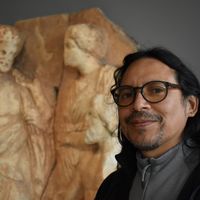



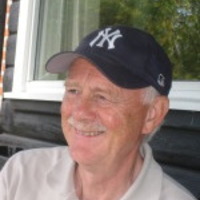
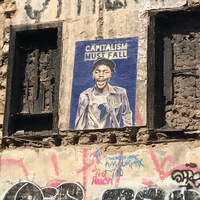
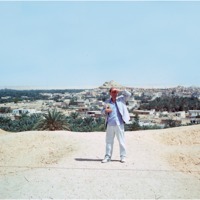

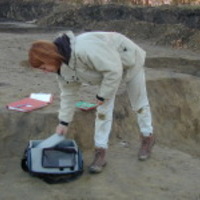
Uploads
Books by Barbara Helwing
With contributions by J. Abuladze, G. Ahadi, T. Aliyev, L. Astruc, K. Bastert-Lamprichs, E. Baudouin, F. Becker, N. Benecke, L. Bouqet, G. Bruley-Chabot, M. B. D’Anna, A. Decaix, E. Degorre, J. Fassbinder, M. Fontugne, I. Gatsov, D. Guilbeau, F. Guliyev, S. Hansen, I. Heit, B. Helwing, X. Husson, V. Ioseliani, E. Jovenet, S. Kroll, B. Kromer, G. Le Dosseur, B. Lyonnet, G. Mirtskhulava, P. Nedelcheva, R. Neef, D. Neumann, L. Pecqueur, M. Poulmarc’h, P. Raymond, A. Ricci, A. Samzun, D. Steiniger, B. Taha, M. Tengberg, M. Ullrich, J. Wahl, D. Zhvania
The DAI Tehran Office turned 50 in 2011 - we celebrated in Berlin, with an exhibition and a conference. The book discusses the beginnings of German archaeological research in Iran since the 19th century until today; contains furthermore short texts on a variety of archaeology- and history-related issues, and some beautiful photographs from the DAI Archives.
Papers by Barbara Helwing
With contributions by J. Abuladze, G. Ahadi, T. Aliyev, L. Astruc, K. Bastert-Lamprichs, E. Baudouin, F. Becker, N. Benecke, L. Bouqet, G. Bruley-Chabot, M. B. D’Anna, A. Decaix, E. Degorre, J. Fassbinder, M. Fontugne, I. Gatsov, D. Guilbeau, F. Guliyev, S. Hansen, I. Heit, B. Helwing, X. Husson, V. Ioseliani, E. Jovenet, S. Kroll, B. Kromer, G. Le Dosseur, B. Lyonnet, G. Mirtskhulava, P. Nedelcheva, R. Neef, D. Neumann, L. Pecqueur, M. Poulmarc’h, P. Raymond, A. Ricci, A. Samzun, D. Steiniger, B. Taha, M. Tengberg, M. Ullrich, J. Wahl, D. Zhvania
The DAI Tehran Office turned 50 in 2011 - we celebrated in Berlin, with an exhibition and a conference. The book discusses the beginnings of German archaeological research in Iran since the 19th century until today; contains furthermore short texts on a variety of archaeology- and history-related issues, and some beautiful photographs from the DAI Archives.